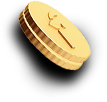What Is An ETF and Should I Invest In Them?

Exchange Traded Funds (ETFs) are a rising star in the investment world. Since 2008 ETFs have grown from $530 billion in assets to over $4 trillion. Why are Americans flocking to this investment vehicle like never before? Because ETFs tend to be a low-cost investment choice that quickly diversifies a portfolio. They are a unique blend of the popular index fund and trade daily on the exchange like stocks. Let’s dive into this below in more detail so you can decide if an ETF is the right investment choice for you.
What Is An ETF?
An Exchange Traded Fund is a type of investment. Essentially an ETF is like a basket that holds multiple securities such as stocks, bonds, and other commodities. The contents of that basket are usually designed to track a benchmark, such as an index like the S&P 500. When you buy an ETF you avoid having to buy all those securities individually and instead, you get an already diversified batch of investments.
ETFs trade on the exchange throughout the day. This means you can buy and sell your basket of securities, your ETF, on the market just like stocks.
Here’s a breakdown of how an ETF works:
- When you purchase an ETF, you’re buying a basket of securities from a broker.
- Your ETF (AKA basket of securities) is usually designed to track a market index such as the S&P 500, although could be designed to track a commodity like gold or oil.
- During the day, you can buy or sell your ETF on the exchange just like stocks.
- Your returns for the ETF will depend on the performance of the underlying assets over the long term.
That’s the nitty-gritty of what an ETF is and how it works, but let’s take a look at why this investment option stands out from others.
Why ETFs Can Be a Good Investment For Beginners
ETFs can be a good investment choice for new investors who aren’t familiar with all the ins and outs of the market. Here’s why:
1. You Can Easily Diversify Your Investments
ETFs act almost like buying a ready-made portfolio because you’re buying a basket of securities. Because you’re buying a basket of securities, your investment is diversified. Diversification reduces risk, which can help put the new investor’s mind at ease.
2. You Can Begin Investing With Very Little Money
While some brokerages that offer ETFs do have a minimum investment requirement, it is often very low. This means the point of entry to investing is very accessible for the new investor. With Finch, you can get started with whatever you have.
3. ETFs Have Higher Liquidity
Since ETFs trade throughout the day on the exchange just like stocks, investors can quickly sell their investments if they need the cash. While it is a general rule of thumb to always invest for the long term, this kind of flexibility can be beneficial for a new investor.
4. ETFs Have Low Fees
ETFs typically have low fees (i.e. a low expense ratio). As a new investor, removing any sort of fee that could put a dent in the overall growth of your portfolio is a win.
5. There Are a Variety of ETF Options for Every Investor Type
Lastly, you have a lot of choice when it comes to ETFs. There are over 2,200 ETFs in the US for you to choose from. You can also choose to invest in an ETF that adheres to environmental, social, and governance (ESG) principles as well. That means you can invest in ways that you feel comfortable with.
Keep in mind that no matter what you choose to invest in, there will be some risk. As a new investor, you need to examine your risk tolerance and be very thorough about your research before making any decisions.
Mutual Funds vs ETFs
There are many different types of funds you can choose to invest in: mutual funds and ETFs being two common choices. Like ETFs, Mutual Funds also offer a basket of securities with things like stocks and bonds.
However, the major difference between the two is that ETFs trade throughout the day like stocks, while mutual funds trade once at the end of the day. The other difference it how they are managed.
Actively-Managed Funds vs. Passively-Managed Funds
Actively-managed funds require an active selection of investments by a fund manager. That means someone is working to try and ‘time the market’ and actively buy and sell your investments. Passively-managed funds, on the other hand, track an existing index. For example, you could choose to have your fund track an index like the S&P 500. This index would track the price of the top 500 companies in the US and a manager wouldn’t be making decisions for you.
Mutual funds can be both actively and passively managed, while ETFs are typically passively-managed funds. If a mutual fund is actively managed, it tends to cost the investor more due to high fees such as the commission fee paid to the manager. In contrast, ETFs tend to have very low fees because they are typically passively managed.
How to Get Started Investing in ETFs
You can purchase ETFs through your broker or by opening a brokerage account online. You can also purchase ETFs through us at Finch.
When you sign up for your Finch account, we ask you a few questions to determine your risk tolerance and goals. We use this information to provide you personalized investment recommendations and guidance to build your portfolio.
Finch only offers a curated set of large, diversified, low-cost stock ETFs and bond ETFs created by some of the world’s largest asset managers. This is to make your investment choices simple while managing risk to a level that is appropriate for your everyday account.









